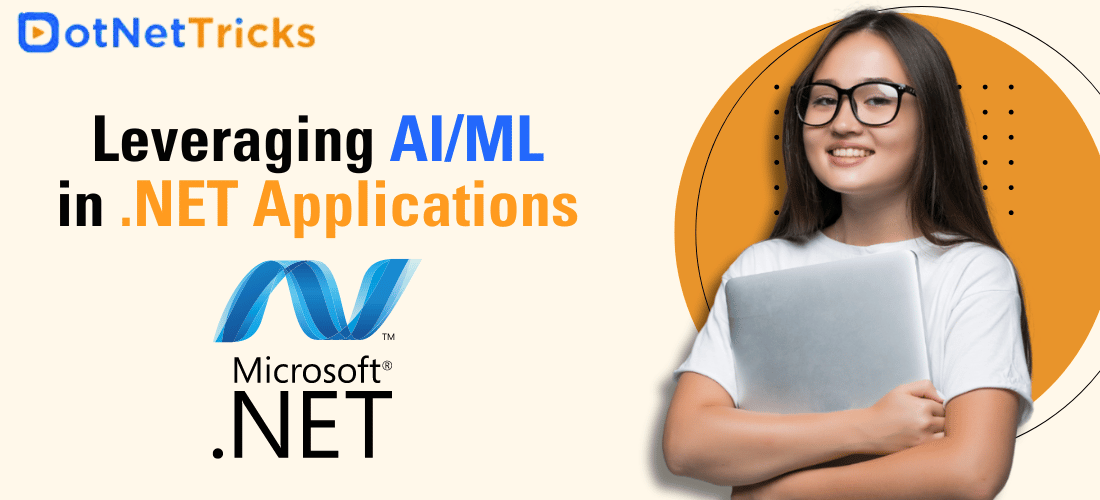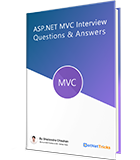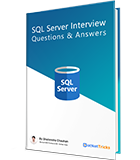23
feb.Leveraging AI/ML in .NET Applications: A Practical Guide and Career Opportunities
Artificial Intelligence (AI) and Machine Learning (ML) are pivotal technologies that are redefining the capabilities of applications across various industries. The fusion of AI/ML with .NET provides developers with powerful tools to build applications with enhanced intelligence, streamlined efficiency, and real-time user interaction capabilities.
This comprehensive guide explores the practical approaches to integrating AI and ML into .NET frameworks, the tools and libraries available, and the burgeoning career opportunities in this space.
Introduction to AI/ML in .NET Development
The .NET framework by Microsoft is a versatile, extensive programming platform designed to support the development of applications for web, mobile, and desktop environments. With the advent of AI and ML technologies, .NET developers are uniquely positioned to enhance their applications with advanced data analysis, predictive analytics, and automated features that drive efficiency and effectiveness.
To be able to integrate AI/ML with .NET, you need to be thorough with the fundamentals of .NET, AI, and ML. For this, do consider our
- .NET Developer Training With Certification
- ASP.NET Core Certification Training
- Artificial Intelligence Certification Course
Why AI/ML?
Integrating AI and ML into applications can drastically improve the functionality, responsiveness, and scalability of software systems. For .NET developers, this means creating applications that can anticipate user needs, make intelligent decisions, and process information at a transformative speed.
The potential for AI/ML to elevate .NET applications is vast, encompassing fields such as finance, healthcare, retail, and more.
Key Technologies and Libraries
To harness the full potential of AI/ML within .NET applications, developers can utilize a range of libraries and APIs designed to make the integration process seamless and straightforward.
- ML.NET: is an open-source and cross-platform machine learning framework for .NET developers. It allows the creation of custom ML models using C# or F#, without needing to leave the .NET ecosystem.
- Azure Machine Learning: A cloud-based machine learning service provided by Microsoft Azure, offering tools and APIs for building, training, and deploying machine learning models in .NET applications.
- TensorFlow.NET: It’s a comprehensive library that provides full compatibility with TensorFlow APIs. This enables developers to utilize TensorFlow's powerful features directly within .NET projects, facilitating more complex AI tasks such as deep learning neural networks.
- Accord.NET: A machine learning framework for .NET, offering libraries and algorithms for tasks such as classification, regression, clustering, and image processing.
- CNTK (Microsoft Cognitive Toolkit): A deep learning framework developed by Microsoft for training deep neural networks, providing .NET bindings and tools for building and deploying AI models.
- ONNX (Open Neural Network Exchange): An open-source format for representing deep learning models, supported by various frameworks including TensorFlow, PyTorch, and CNTK, enabling interoperability and integration with .NET applications.
ML.NET Model Builder: A Visual Studio extension that simplifies the process of building and training machine learning models using a graphical interface, suitable for developers new to machine learning.
SciSharp STACK: An ecosystem of .NET libraries for scientific computing and machine learning, including libraries such as NumSharp, SciSharp.TensorFlow, and SciSharp.Learn, providing a comprehensive toolkit for AI/ML development in .NET.
Practical Implementation Strategies
Integrating AI and ML into .NET applications requires careful planning and execution. Here are practical strategies for successful implementation:
1. Data Preparation
Data is the foundation of any AI/ML model. Efficient data collection, cleaning, and formatting are crucial. .NET developers should utilize robust data processing methods to prepare datasets that can be effectively used for training AI models.
2. Model Training and Evaluation
Once data is prepared, the next step is model training. Developers can use ML.NET or TensorFlow.NET to train models on their prepared data. It’s vital to evaluate the model’s performance using various metrics to ensure its accuracy and effectiveness in real-world scenarios.
3. Deployment and Integration
After training, the model needs to be deployed into the .NET application. This integration should be done in a way that optimizes performance and maintains the usability of the application. Continuous monitoring and updating of the model are necessary to adapt to new data and changing conditions.
4. Career Opportunities in AI/ML with .NET
As AI and ML technologies continue to evolve, so do the career opportunities for .NET developers skilled in these areas. Professionals can explore roles such as:
- .NET AI/ML Developer
These specialists focus on integrating AI and ML models into existing and new .NET applications. They are skilled in both .NET development and AI algorithms, making them invaluable in any tech-driven company.
- Data Scientist with .NET Expertise
Data scientists with expertise in .NET are crucial in scenarios where data processing, analysis, and model implementation need to be executed within the .NET framework.
- .NET AI/ML Architect
AI architects with a background in .NET oversee the strategic implementation of AI technologies within large-scale .NET applications. They ensure that AI solutions are designed and implemented in alignment with business goals.
- DevOps Engineer with .NET and AI/ML Expertise
Leveraging .NET technologies, they automate deployment processes and optimize infrastructure. Additionally, their AI/ML expertise enables them to integrate intelligent features and automation into DevOps workflows, enhancing efficiency and scalability.
5. Learning and Development Resources
Microsoft Learn: Offers free interactive tutorials, learning paths, and modules on AI/ML concepts, algorithms, and frameworks with practical examples using ML.NET and Azure Machine Learning.
ML.NET Documentation: Provides comprehensive documentation, guides, and samples for getting started with ML.NET, including tutorials, APIs, and best practices for building machine learning models in .NET applications.
Community Forums and Events: Participate in online forums, discussion groups, and community events focused on AI/ML and .NET development ScholarHat’s Learning Courses and Certifications
Conclusion
The integration of AI/ML into .NET applications not only enhances the capabilities of the applications but also opens up a plethora of career opportunities for developers. Whether you are a seasoned .NET developer looking to upgrade your skills or a newcomer to the field, mastering AI and ML within this framework will position you at the forefront of technological innovation.
As we continue to witness the expansion of AI/ML in various sectors, now is an excellent time for .NET developers to leverage these technologies, enhancing both their professional capabilities and the functionality of their applications.
Take our free skill tests to evaluate your skill!

In less than 5 minutes, with our skill test, you can identify your knowledge gaps and strengths.







